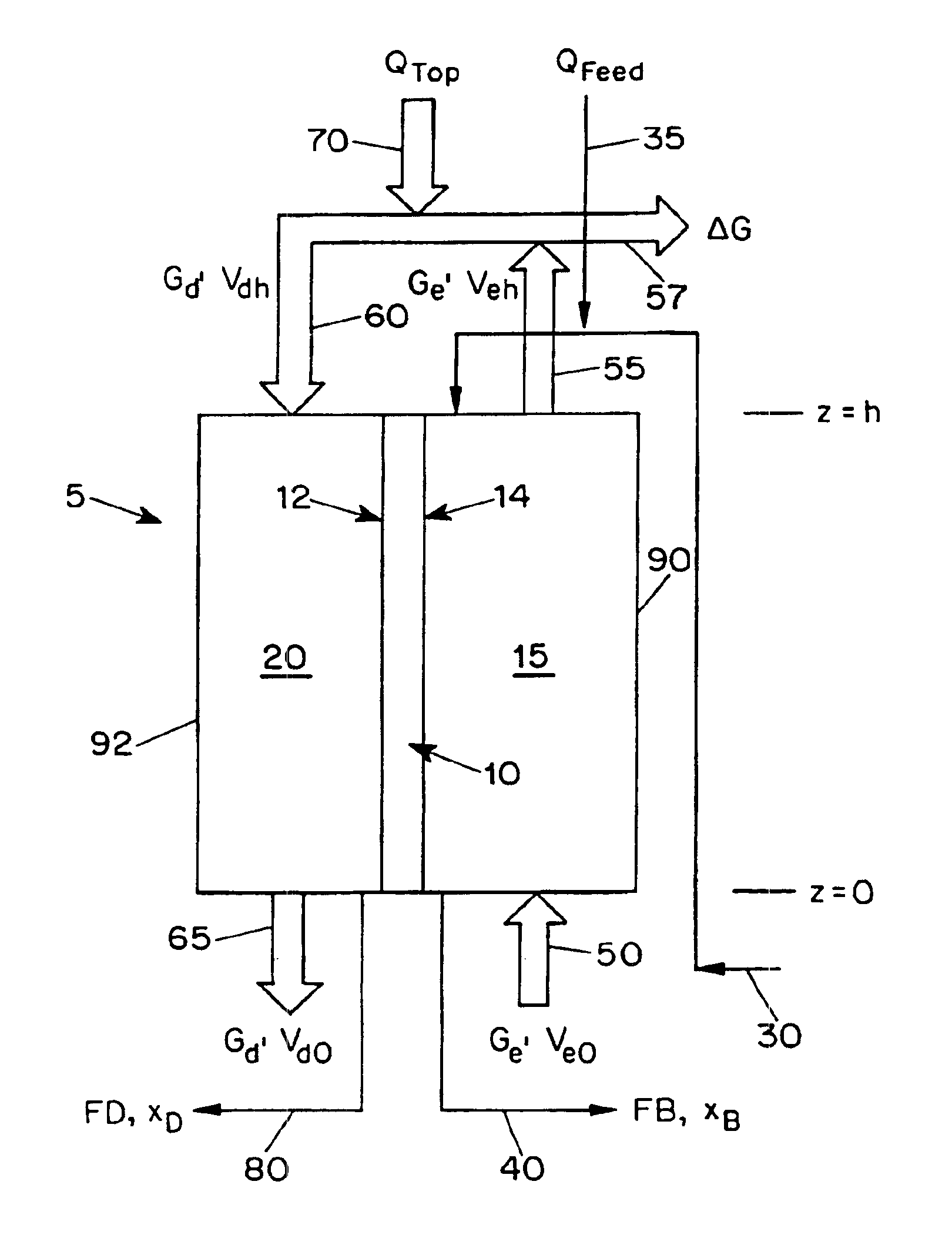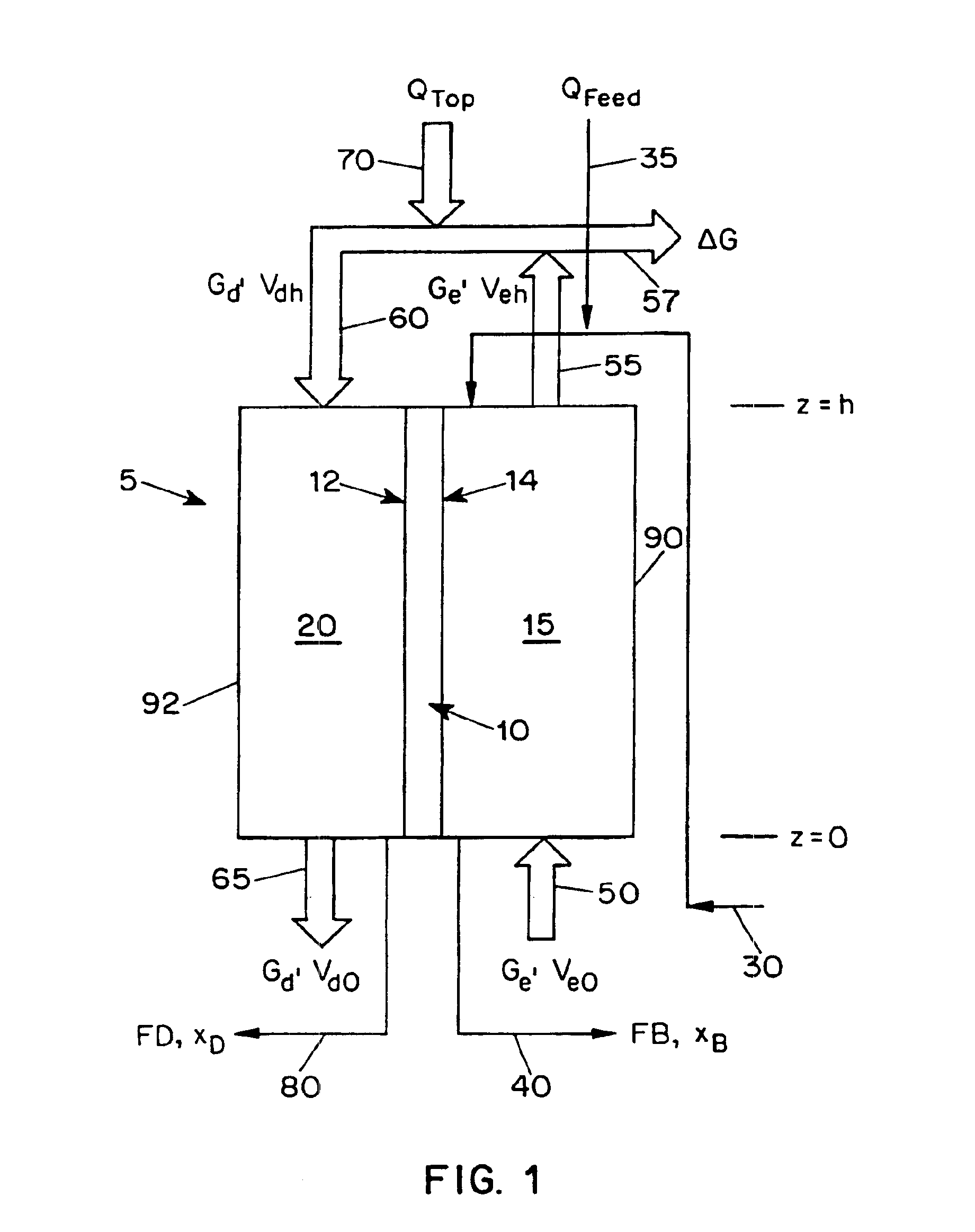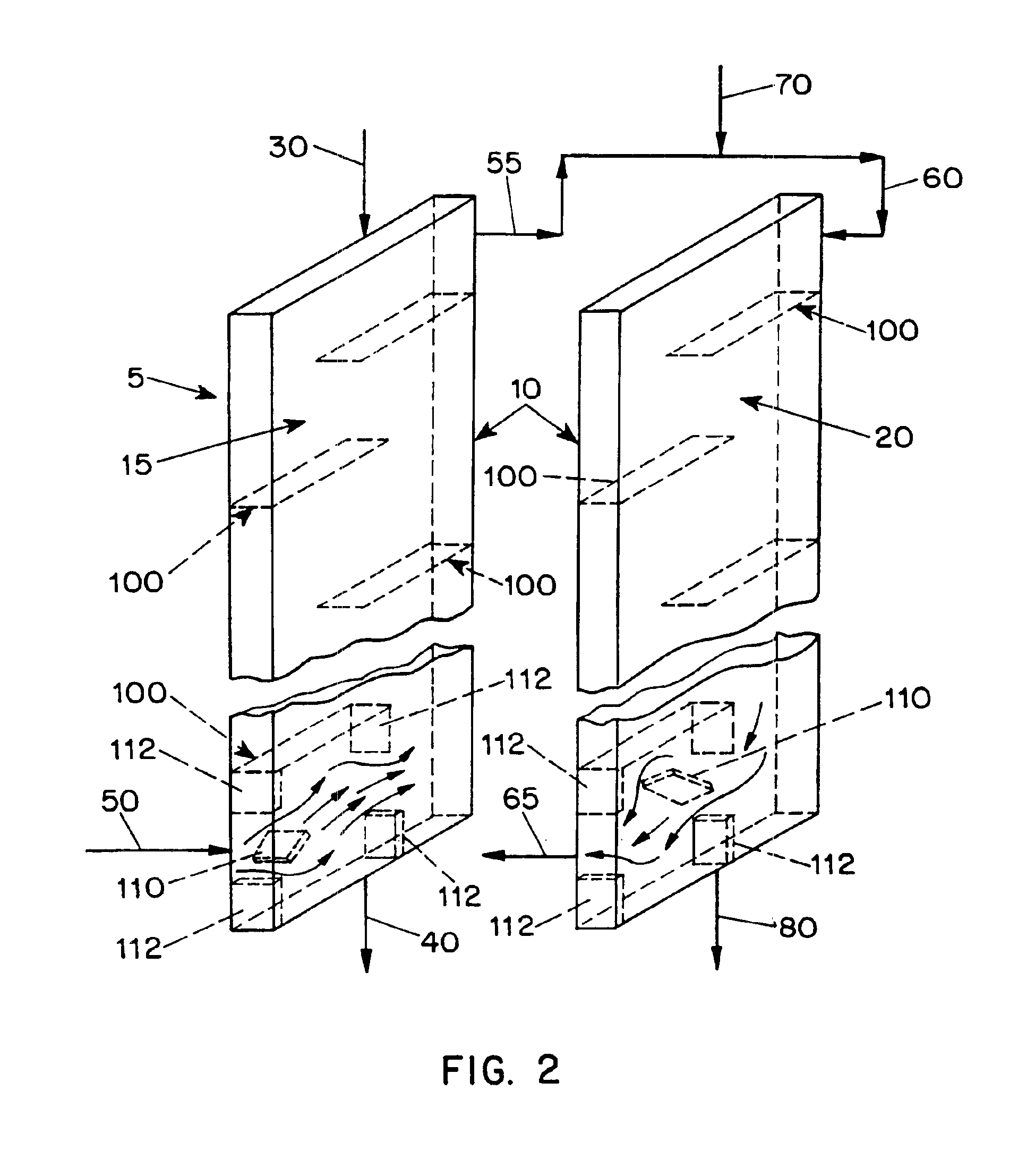Method and apparatus for simultaneous heat and mass transfer utilizing a carrier-gas
a carrier gas and simultaneous heat and mass transfer technology, applied in lighting and heating apparatus, combustion-air/fuel-air treatment, separation processes, etc., can solve the problems of increasing the maintenance and/or pretreatment costs of ro operations, requiring costly phase changes of liquids, and reducing the efficiency of ro in purifying water containing non-filterable suspended particles, etc., to achieve the effect of increasing the concentration of water vapor
- Summary
- Abstract
- Description
- Claims
- Application Information
AI Technical Summary
Benefits of technology
Problems solved by technology
Method used
Image
Examples
example 1
[0063]The Dewvaporation apparatus of the present invention avoids the use of multiple pumps effectively by letting gravity produce the liquid movement. A laboratory bench scale tower containing an effective total heat transfer area of 20 ft2 (1.8 m2) was built. The height of the tower was 8 feet (2.44 m) and 6 inches (15.24 cm) wide. The heat transfer wall was made of plastic sheets (75 microns thick) with ¼ inch spacing between the heat transfer wall and the outer wall of the apparatus. The shell of the apparatus was made of twin wall polycarbonate plastic sheets (commercially available as Lexanthermoclear sheet twin wall ¼ inch sheets from the Structural Products Division of General Electric Company) to give support for the apparatus. The outside of the apparatus was further covered with polystyrene foam to provide insulation. Initial data were conducted using brackish water having 850 ppm TDS, as shown in Table 2.
[0064]
TABLE 2Energy Reuse Factor and Production Density DataTempera...
example 2
Scaling Experiments
[0066]The scaling experiments were carried out on a bench scale unit, which consisted of a thermal control grill mounted vertically with a sample of a plastic heat transfer sheet attached to its surface.
[0067]The unit was covered with a plastic wall allowing the air to rise in temperature in order to simulate the operation of the tower. Salt solution was prepared according to ASTM method number D1141-90 (1992) with a salinity of 35 g / Kg. Moreover, temperatures of the liquid film were measured along the center of the wall using thermocouples.
[0068]Results showed that after 82% to 85% recovery of water, solids were observed. However, the solids were washed down the plastic wall without adhering to it. The Dewvaporation process concentrates salt solution from 3.5 wt % to 10 wt % which is 67% water recovery, so potential scaling does not appear to be a dominant factor in this process.
example 3
1000 gal / day (4 m3 / day) Desalination Facility
[0069]The basis for a cost estimation is a 1000 gal / day brackish water unit (FIG. 7) with a factor f=15. The capital charge factor 0.12 was based on the current prime interest rate of 8.5% and an equipment life of 15 years (Table 3). The feed may contain up to 8000 ppm TDS resulting in a condensate of less than 1 ppm TDS.
[0070]
TABLE 3Cost Summary of 1000 gal / day unitPlastic heat transfer wall (4400 ft2*$0.096 / ft2)$425Cover$1004 pumps (feed liquid and hot water recycle)$2501 air fan$441 hot water, 80% efficiency$485Pipes and fittings$100Assembly (2 workers at $10 / hr for 8 hrs)$160Total manufacturing cost$1,564Manufactures gross margin$500Total Unit Cost 2064**$2.06 / gallon day or $0.52 / cubic meter day
[0071]The major elements of the equipment costs are the plastic heat transfer wall and the hot water heater. Each of which accounts for about 30% of the manufacturing cost. A reduction in the size of the heat transfer wall can be achieved by h...
PUM
| Property | Measurement | Unit |
|---|---|---|
| pressure | aaaaa | aaaaa |
| size | aaaaa | aaaaa |
| pressures | aaaaa | aaaaa |
Abstract
Description
Claims
Application Information
 Login to View More
Login to View More - R&D
- Intellectual Property
- Life Sciences
- Materials
- Tech Scout
- Unparalleled Data Quality
- Higher Quality Content
- 60% Fewer Hallucinations
Browse by: Latest US Patents, China's latest patents, Technical Efficacy Thesaurus, Application Domain, Technology Topic, Popular Technical Reports.
© 2025 PatSnap. All rights reserved.Legal|Privacy policy|Modern Slavery Act Transparency Statement|Sitemap|About US| Contact US: help@patsnap.com



